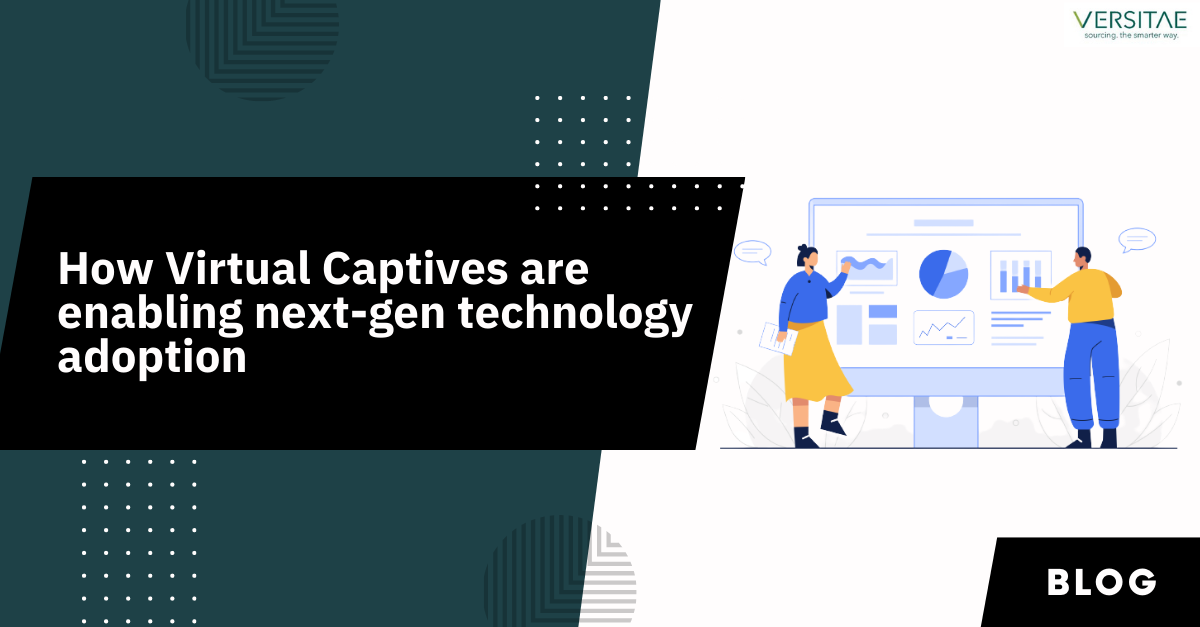Over the last couple of decades, we have witnessed explosive growth in IT outsourcing and India has been established as one of the major offshoring destinations with access to a wide, low-cost talent pool.
We have also seen the nature of services provided through outsourcing has evolved from mere cost arbitrage to innovative, business outcome-driven service offerings leveraging emerging technologies and paradigms to drive strategic value.
A trend observed across the IT outsourcing landscape is that the managed GICs are set to enable and sustain digital transformation.
The managed global in-house centers are currently in the initial stages of digital service delivery maturity but are beginning to lead the way in driving greater value to enterprise transformation.
During this period, the nature of services provided through outsourcing has also transformed from mere cost arbitrage to high-quality, innovative, and strategic IT solutions.
According to Eric Gordon, strategic technology advisor, and Managing Partner at Versitae, “ The more technology becomes embedded with business processes, the more technology then becomes part of the ongoing business as usual changes that are required to keep up with changing customers, changing business conditions.
So, a business can no longer implement a technology system and then just run itself without touching technology for the next several years. Now, technology is embedded with the process, BI and analytics, consumer-facing digital, and in a lot of different ways. So as the business needs to change and evolve, then everything becomes a technology project partially. What that means is you must have the talent, skills, and capability to iterate and evolve, your operating capabilities using technology.”
Eric says, “One and done projects are good, or over. That is how technology was run 20 years ago. Today, as a business evolves, changes its website, and needs to attract new and different customers, there’s an ongoing churn of technology capabilities that must be built, maintained, and enhanced which naturally takes people and that costs money. And so, this is where the virtual captive comes into play. Suppose you need these teams, and you need these people with the skills on an ongoing basis. Why not put them in a virtual captive and use the cost advantages you gain by doing that, to get very talented people that can drive value for your business at the lowest total cost of ownership? That’s kind of the magic of what a virtual captive can do for you.”
Furthermore, they’re effectively your team and resources. It’s just they’re sitting somewhere else. It works like any other remote team. So, you have got full control of what they do and how they do it.
Eric strongly believes that Virtual Captive can facilitate the process of getting into the next-gen technology adoption for enterprises.
The virtual captive model given the cost advantage provides an opportunity for the enterprise to invest in newer technologies at a significantly lower cost structure. Adopting newer technologies involves a certain amount of trial and error, along with research and development.
In the new business landscape, every company is a technology company.
“Every company that the private equity firms invest in, they view as a technology play, and how they can leverage technology. Well, sometimes it involves an amount of experimentation. So, you can get that on a more cost-effective basis, by leveraging virtual captive, and in many cases, business leaders, look at the cost of domestic resources, especially technology resources as huge barriers to doing things and so many times they just don’t do things because they can’t afford it. They can’t afford to keep those technology resources on an ongoing basis. And here’s
where the virtual captive model brings a tremendous amount of capability and capacity at just a fraction of the cost. So, it opens the doors for a lot of things, especially next-gen technology adoption”, according to Eric.
The Virtual Captive model, also known as Managed GIC, gives you all the strategic benefits of a Global In-House center while mitigating your legal risks, protecting your IP risks, and solving your day-to-day management issues. Plus, access to a quality talent pool means that your managed GIC can serve as the R&D and Innovation Hub for your enterprise and contribute positively to your bottom line.
We have decades of experience in operating this model for clients where our clients achieve 30%+ cost savings on average compared to traditional offshoring. Reach out to us for a free consult and a free price comparison matrix tailor-made to your skill needs.
